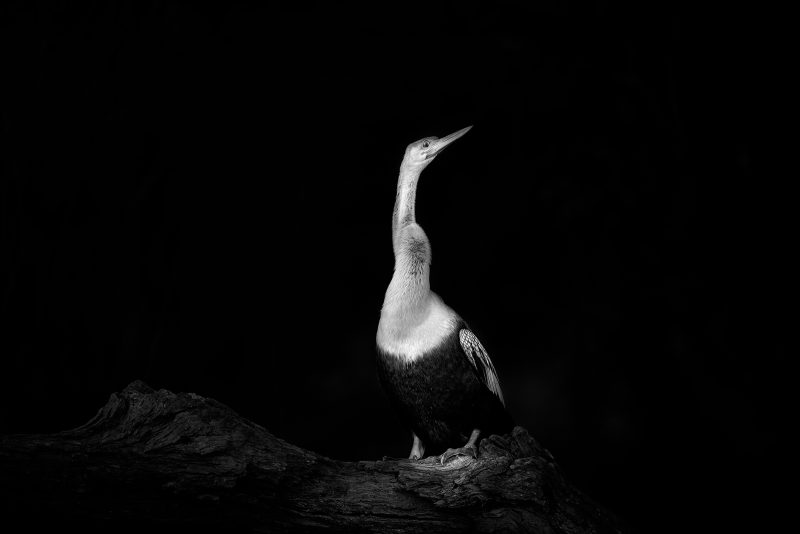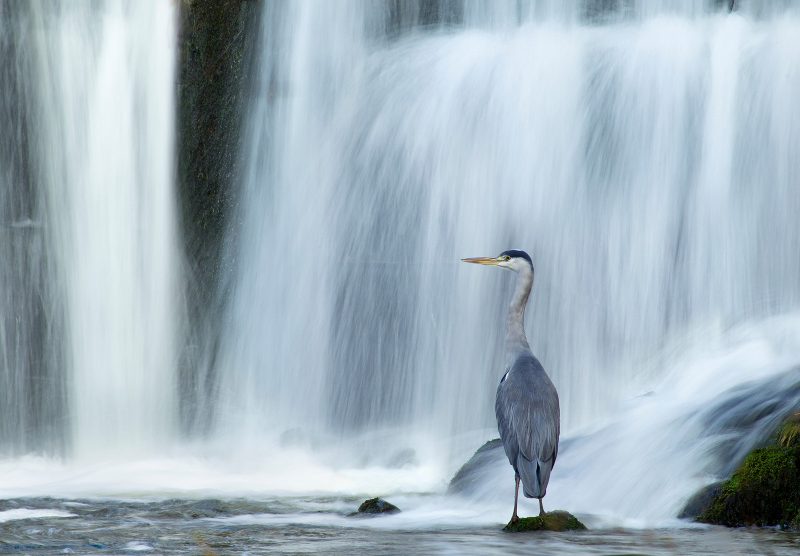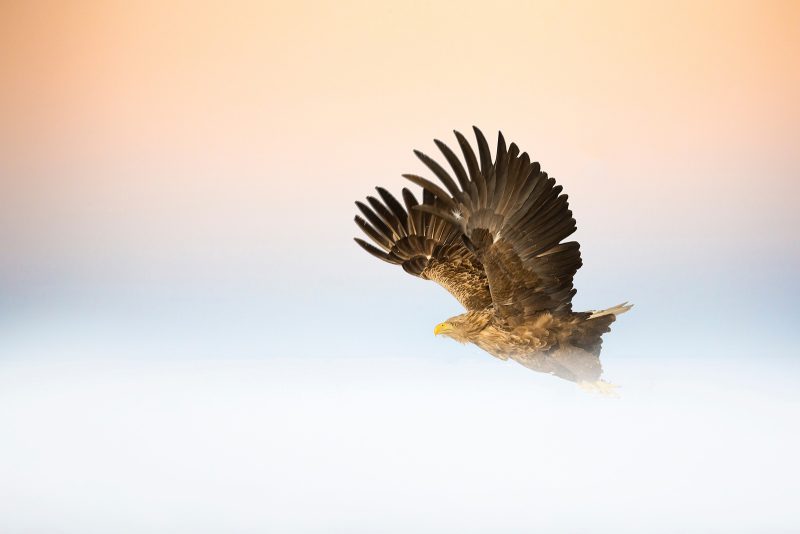How to Develop a Photographic Style

Since the arrival of digital technology, photography has become more popular than ever before. With so many images and genres of photography out there, it can be difficult to stand out from the crowd. Finding your style in photography can be tough.
How do you make your images connect with your audience? How do you differentiate them from the millions of images that are brandished over social media every day?


Here are a few ideas that should help you discover and develop your own photography style and get the most out of your wildlife photography adventures.
How to find your photography style
Photography is subjective. The type of images that appeal to one person may not connect with everyone and discovering and honing your own style takes time and experience.
If you are relatively new to photography, you will first need to think about the type of images that you feel most drawn to. Take time to study the work of other photographers and artists and don’t limit yourself to wildlife and nature; analyse other genres too.
When you find images that you connect with, ask yourself what it is about them that speaks to you. You should soon start to notice a pattern. Close-up portraits, abstracts, motion-blur, and environmental shots for instance can all make compelling pictures. However, in order to find the type of style that best suits you, you will need to experiment.
To get your creative juices flowing, here are some examples of fine art styles to explore.
Read more: Wildlife Photography for Beginners – Tips for Starting Out
Black and white photography
Monochrome photography can be used to convey atmosphere, exaggerate patterns and textures, and depict mood. It does this in a unique way.
With the absence of colour, you will need to rely more heavily on contrast, texture, and form to create images that stand out.
Our eyes do not give us the ability to see in black and white, so we all take colour for granted. By looking closely at a subject and learning to recognise the relationship between tone and colour, you can develop the ability to ‘see’ the world in monochrome.
Some images require colour for impact, so when shooting specifically for black and white, the ability to visualise your images in monochrome is a huge advantage.
Any subject matter can work in black and white, but you will need to think carefully about the composition, background, and lighting. This will become easier with experience.
Usually, I try to avoid shooting in harsh midday light, but the strong shadows present when the sun is high in the sky can suit mono, as contrast levels can create an impact when colour is absent.
Soft, overcast light can also work well; it will be much easier to render fine detail in a bird’s plumage, or a mammal’s coat. Intricate details and natural textures or patterns in the landscape can also become more apparent when contrast levels are low.
Read more: How to Photograph Wildlife in Black and White
Motion blur
Most of the time, wildlife photography is about freezing the subject. Pin sharp images show every minuscule detail, giving a clear representation of the subject and often creating an immediate impact. Slow shutter speeds can be used, however, to represent your subject in an entirely different and unique way.
While only a moving picture can truly record time and motion, it is possible to create the impression of movement by using a slow shutter speed. Capturing a sense of motion is a unique style that provides depth, energy, and dynamism to your work. This technique requires plenty of experimentation.
The most effective shutter speed will depend entirely on the speed at which your subject is moving, and its distance. The best way to begin is to switch to shutter priority and dial in a variety of different shutter speeds – between 1/15th and 1/50th is a good place to start.
Study the subsequent pictures carefully and decide for yourself which shutter speed offers the most effective results.
When your subject is moving from side to side you will need to ‘pan’ with your camera. By panning with a slow shutter speed, you should find it possible to create a motion blur effect. Depending on the speed of your subject and shutter speed used, a sharp subject against a blurred background can be achieved.
You may decide to go even slower and completely blur both the subject and background for a more abstract result.
Moving the camera intentionally during the exposure (or ICM for short) is another way of exploring the idea of movement. This can even be done with a static subject, but I prefer the subject to also be in motion.
Using elements of the environment can work well and give your images the appearance of an impressionist painting. This can be particularly effective during the Autumn months when there is more colour in the landscape. The beauty of ICM is that there is no right or wrong. It is a playful and creative way to photograph your subject, and when done well the results can be stunning.
Read more: Creative Visions – How to Photograph Abstracts in Nature
Post-processing
The way in which photographers process images can vary greatly. Since my photographic journey began before digital photography was invented, I prefer to keep my final image as close as possible to the scene at the time. I like to pre-visualise my images and adjust my camera settings to get as close as possible to my vision, only using post-processing as the final piece of the puzzle.
If your aim is to enter competitions, it is important to consider the amount of post-processing. Most major photographic competitions request the RAW file if your image reaches a certain stage of the judging process. If you have wildly altered the picture in post-processing and it differs too much from the original image, there is a good chance that your entry will be rejected.
There is nothing wrong with using digital processing, as long as the photographer is honest about the way in which the image has been created. There are plenty of photographers who use post-processing as an integral part of their work. For many, it is the art of post-production that gives them their unique style.
Drama can be introduced with the use of dodging and burning, and atmosphere can be created with the use of shadows and highlights. There are certain competitions that have a separate category for digital art, so if you decide to explore this route there will always be options to enter competitions.
Photographs created digitally can also have great commercial value, so depending on where you would like your photographic journey to go, this is something to think about.
Read more: All You Need to Know to Process a Raw File in Lightroom
Environmental images
Photographing the subject as part of the environment is one style I was drawn to from a very early stage in my wildlife photography career. Inspired by artists such as Sir Peter Scott, I like to show the relationship between the subject and the landscape.
Environmental images have the ability to tell a story and draw the viewer into the subject’s world. Although I adopted this style early on, and still consider it my favourite way of shooting, I now use multiple styles depending on the targeted subject, and the vision I have.
Using light to create atmosphere and mood is, and always has been, a major part of my work. Light has the ability to transform any scene and turn the seemingly mundane into something truly magical.
I strongly favour backlighting during the golden hour. The rim lighting that this creates highlights the subject wonderfully, and the golden hues can evoke atmosphere and even emotion.
Although I am strongly driven by artistic vision, I still think with a commercial head sometimes. I will leave plenty of negative space around the subject where text can be inserted. Or if I am shooting in portrait format, I will leave some extra space at the top of the frame to make the image more suitable for a magazine or book cover.
Read more: 12 Ways to Evoke Emotion in Your Wildlife Photos
Commercial considerations
If your aim is to sell your work, this may have an impact on the style that you would like to develop. Fine art styles can be commercial, but you will find the market quite different compared to a more accurate and scientific style.
If you like the idea of exhibiting your work and selling prints, fine art photography would certainly be an avenue to explore. If you prefer to represent your subject in a more literal way, the editorial market such as magazines, books, and greeting cards is likely to be more suitable.
Social media is a great way of showcasing and marketing your work, but a specific style may not suit each platform equally.
For instance, Instagram is a phone-based app and as such the vast majority of users will view your images on a small mobile phone screen. This does not particularly suit environmental images as the subject will often be very small in the frame, making it difficult to see on a small screen and lacking the impact it would have at a larger size.
Read more: Selling Photography Prints – Making Money from Photos
How to make your photography unique
Today’s media is saturated with strong images. For your work to stand out, you will need to think outside the box and come up with ways of creating something unique.
Before tackling a particular project, get into the habit of researching the images already out there. The trick then is to not fall into the trap of replicating what has been done, but instead, look for new and imaginative ways to represent your subject.
Aim to create pictures that tell stories and think about what type of concepts you can explore. Give your creativity free reign, and don’t be afraid of bold, unorthodox compositions.
Often, images that break the conventional ‘rules’ turn out to be the most compelling and memorable pictures of all.
Read more: How to Master Exposure in Your Wildlife Photography
In conclusion
Whether you would like your photography to become a commercial business, or you want to simply enjoy it as a hobby, the style you choose to develop should ultimately be influenced by your passion.
Think carefully about the style of images that you would like to create, and shoot for yourself, not to please others. Work with subjects that excite you and stir your creativity.
Follow your vision and trust your artistic creativity and I firmly believe that your own photographic style will naturally shine through.




















